Wendover Air Force Base and the Manhattan Project
There are many additional stories to be written as we pay tribute to the great aircraft of the past, and the men and women associated with them. Like the atomic bomb facilities and training that took place at Wendover Air Force Base on the Nevada-Utah border ...
 The crew of B-29 "Enola Gay" at Wendover Field Pilot Col. Paul Tibbets in center |
Wendover Army Air Base: The Early Years
Congress appropriated funds for Wendover Field in 1940 for the acquisition of land for bombing and gunnery ranges, and the Army Air Corp started construction of buildings on the site.
Wendover Army Air Base was activated in 1942 as a B-17 and B-24 heavy bomber training base.
Wendover's Role in the Manhattan Project, the Development of the Atomic Bomb, and B-29 Training
By 1944 development of the atomic bomb was under way as part of the Manhattan Project, and the Boeing B-29 Superfortress was selected to deliver the weapon. The base was given the code name "Kingman" and the assignment to assemble, modify and flight test prototype bombs was named "Project W-47".
As the design progressed, Project W-47 personnel assembled more and more complex versions of the "Little Boy" and the "Fat Man" bombs. A successful test of the "Fat Man" took place on July 16, 1945 south of Wendover at Alamogordo Army Air Field, New Mexico.
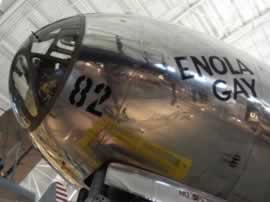 The B-29 "Enola Gay" at the Udvar-Hazy Center (Airplanes Online Staff Photo) |
Paul Tibbets was born February 23, 1915, son of Enola Gay and Paul Warfield Tibbets. An experienced pilot in World War II, he reported to Colorado Springs in Septebmer, 1944, for a top secret assignment - to organize a bombardment group to deliver the atomic bomb. Tibbets' force, the 509th Composite Group, included 15 B-29's with special "Silverplate" modifications, and 1,800 men. The 509th settled on Wendover as their base due to its remote location. Tibbets brought his wife and family along with him to Wendover.
The Silverplate B-29s had modifications necessary to deliver atomic weapons, which included an extensively modified bomb bay with pneumatic doors, special propellors, modified engines and the deletion of protective armor and gun turrets.
The war was about to end. Colonel Paul Tibbets piloted the "Enola Gay" (Serial Number 44-86292) on August 6, 1945, and dropped "Little Boy" over Hiroshima, Japan. Three days later the "Fat Man" was dropped on Nagasaki by the B-29 "Bockscar".
After the war, the Enola Gay was stored at the Pyote Army Air Field in Texas, and later transferred to the Smithsonian Institution for display at the Udvar-Hazy Center at Dulles Airport. Bockscar is on display at the National Museum of the United States Air Force in Dayton, Ohio.
Wendover Air Base Role in the Post-World War II Era
After the war, Wendover was used for training exercises, gunnery range and as a research facility. Some crew training continued, but at a reduced level, and some B-29s were stored at the base.
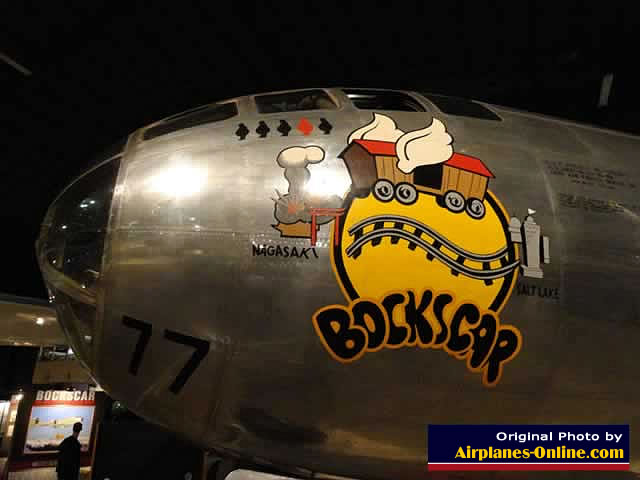 The B-29 "Bockscar" in Dayton, Ohio (Airplanes Online Staff Photo) |
The base was transferred to the new Strategic Air Command (SAC) in 1947, and was used by bombardment groups deploying on maneuvers. With the establishment of the U.S. Air Force as an independent service, the installation was renamed Wendover Air Force Base in 1947.
It was closed by the Air Force in 1969, and in July 1975 the base was listed on the National Register of Historic Places. In 1977 the federal government deeded much of the airfield to the City of Wendover, including the runways, taxiways, flight line, former hospital complex and hangars. Some acres, including the radar site, were retained by the military.
Wendover Air Force Base Today
Part of the original bombing range is now the Utah Test and Training Range (UTTR) which is used extensively by the Air Force with live fire targets on the range.
We encourage those with an interest in preserving the field to visit the website of the Historic Wendover Air Field Foundation to learn about restoration efforts now underway, and how you can help this volunteer organization. The foundation has installed a series of informative historic markers throughout the area (see photos of some signage below).
The airport is also the site of the annual Historic Wendover Air Show.
Photographs of Wendover Air Force Base
Shown below are a few of the photos we shot during a recent visit to Wendover.
Wide-angle view of the former Wendover Air Force Base, looking south (Airplanes Online staff photo) |
 |
Atomic Mission Hangar 1831 built to house the new B-29 aircraft |
 |
B-29 Hangar at Wendover Air Force Base on the Nevada-Utah Border |
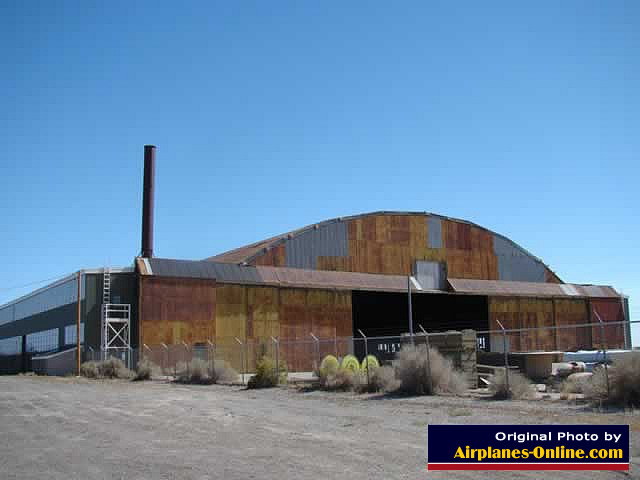 |
Operations Building, which was the control center for all flight training operations. Today, the building houses the Hall of Honor Museum and the airport's administrative functions |
 |
Abandoned building at the site of Wendover Air Force Base |
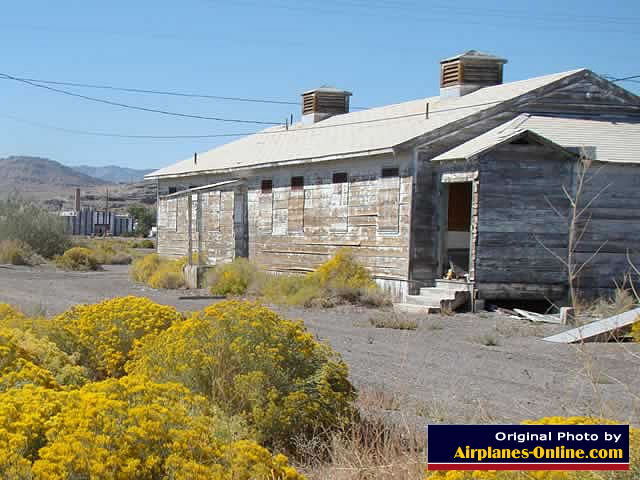 |
B-29 Enola Gay after dropping the bomb on Hiroshima |
 |
B-29 Enola Gay, the plane that dropped the "Little Boy" bomb on Hiroshima, on display at the Smithsonian's Udvar-Hazy Center at Dulles Airport in Washington Airplanes Online Staff Photo) |
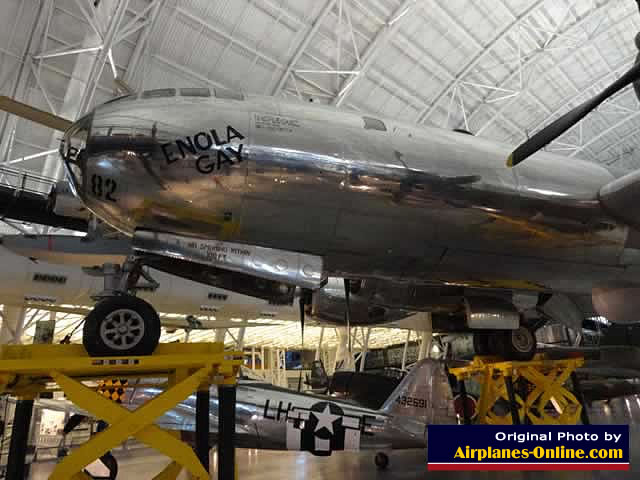 |
Historic Wendover Air Field in Utah ... The Enola Gay Hangar, and Restoration Progress

